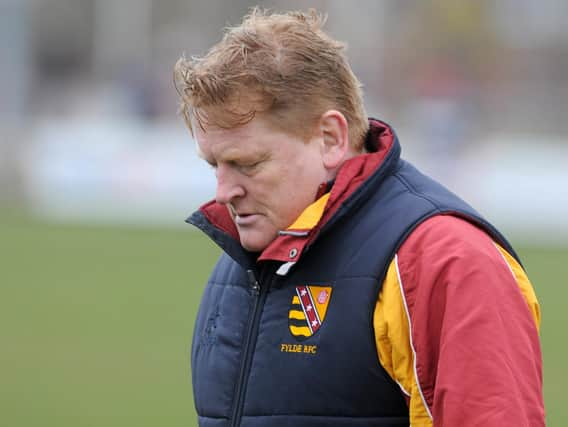Rugby union tackling vital issue of head injuries says Lancashire head coach Mark Nelson


That’s the considered opinion of Lancashire’s head coach Mark Nelson, the former Fylde supremo, on one of the most important issues confronting the game.
A group of former players have begun legal proceedings against the game’s authorities for negligence in this area. They include the England World Cup winner Steve Thompson, who has been diagnosed with early onset dementia.
Advertisement
Hide AdAdvertisement
Hide AdNelson says the process of addressing issues which arose when the sport first went professional has been a gradual one, though he stresses the game is now “very meticulous” in all matters concerning head injuries.
He told The Gazette: “I think that for about a decade after the game went professional in 1995 there were still a lot of unknown elements.
“Training became more professional and it took clubs a while to come to terms with all the implications. Part of the evolution in that period was the change in the physique of players and the defensive systems.
“It went from a contact sport to a collision sport and people didn’t have the detailed knowledge or the science they have now on the impact of head injuries.
Advertisement
Hide AdAdvertisement
Hide Ad“But there has been been a massive change in the perception and protocols surrounding head injuries.
“I’d say the game is now very meticulous and it’s an area where the physio supersedes the coach. The game is very aware of head injuries now and of the risks.
“Techniques are being taught in the high-impact areas – such as tackling, rucks and going for balls in the air – and if you teach the right technique you can play safely.
“But there will always be a risk element, as there is playing any sport or even crossing the road. But rugby is aware of his issue and is taking it massively seriously.”
Advertisement
Hide AdAdvertisement
Hide AdAn attempt to stamp out high-tackling is part of the process, though Nelson says that changes to defensive systems in the professional era have created issues.
He explained: “They have changed the rules to bring tackles lower but there has been a shift in the game from the ‘drift’ defence, where tackles came mainly from the side, to a high-impact ‘rush’ defence, which is more front on at chest height.
“If a tackler’s head is too low it can contact the knee, and if it’s too high it can contact the head or shoulder of the ball-carrier.
“There is a sweet spot in between and tackling around the hips is preferable because both players can go to ground with their heads in a safe place.”
Advertisement
Hide AdAdvertisement
Hide AdHowever, he adds that the modern game is safer in certain ways: “Contact training during the week is restricted at community level and it could be a very violent sport back in the day.
“Flying fists have gone out of rugby but the impact and physicality has increased, and that required a responsible approach by practitioners and law-makers. There is a process evolving and players are buying into it.”
And Nelson also threw in a couple of ideas which could possibly counter the ‘rush’ defence systems which now dominate.
“One left-field idea would be to say you must have four players behind the defensive line, which would force teams into a drift defence rather than front on.
Advertisement
Hide AdAdvertisement
Hide Ad“Another could be to widen pitches. We always used to say rugby was a game of 17 defenders against 15 attackers because the touchlines act as extra defenders, restricting the space. But for all the athleticism and skill of the players today, the pitches are still the same width they were decades ago, so the only way to create space now is to commit defenders into contact.”
More former players suffering from concussion-related problems have joined the lawsuit against the game.
A pre-action letter of claim was delivered to World Rugby, the Rugby Football Union and Welsh Rugby Union yesterday on behalf of nine players.
Thanks for reading. If you value what we do and are able to support us, a digital subscription is just £1 for your first month. Try us today by clicking here.
